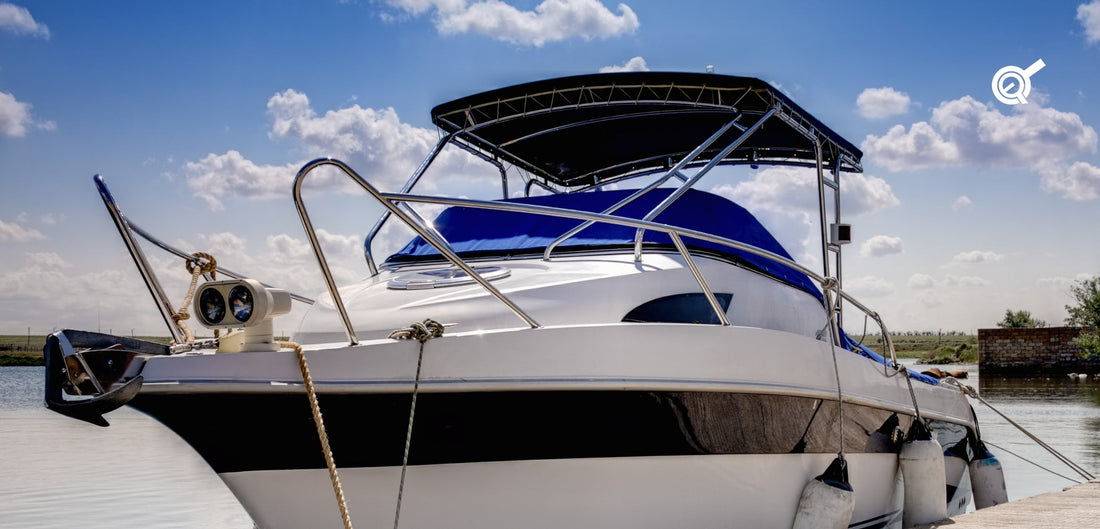Bimini tops are essential for boating under the bright sun, providing users shade as sun protection against the scorching rays while adding an element of style and comfort. Automatic deployment of Bimini tops through electric linear actuators enhances overall user convenience and brings their boating experience to the next level. Choosing the right actuators for your Bimini tops is a critical part of ensuring smooth sailing, however, misconceptions can lead to less-than-ideal selections. This article will cover the common misconceptions in selecting actuators for Bimini tops and highlight important guidelines to ensure you have the necessary reliability and smooth operation to avoid failures and costly downtimes.
Misunderstanding Load Capacity: A Recipe for Failure

Selecting an actuator without verifying the minimum required actuator load capacity can lead to performance issues and even damage to the Bimini tops. Many misunderstand how much load the actuators will experience due to not accounting for the mounted pivot points and the mechanical leverage they introduce into the system.
Besides considering the Bimini top weight and size, calculations of the load experienced on the actuator’s shaft after including the mechanical leverage are necessary to confirm the minimum force rating requirements. Ensure the chosen model has a sufficient actuator load capacity that matches or exceeds your calculated force rating requirements.
Choosing the Wrong IP Rating: A Common Overlooked Factor

Having a sufficient ingress protection rating ensures a longer product lifespan when exposed to water and other harsh conditions found in marine applications. Units rated for IP67M such as the PA-06 Waterproof Actuator are suitable for installation with Bimini tops that get exposed to lots of water, offering 30 minutes of dust and waterproof protection while in motion.
When subject to lots of salt water, corrosive cleaning agents, and temperature changes, certain materials are more likely to degrade over time than others. For high actuator durability, consider selecting components that consist of materials with corrosion resistance such as stainless steel or composite materials. While it is possible to encase linear actuators with protective covers, the ideal scenario would be to have the actuators themselves come built with the necessary corrosion resistance.

Our PA-10 Linear Actuator is available in a Salt Spray rated version which features specialized porcelain plated housing to ensure much greater corrosion resistance than standard actuator models. This has been vigorously tested for up to 400 hours of salt spray exposure, ensuring that it will perform in the harshest environments.
Ignoring Speed and Stroke Length: Impact on Efficiency

Actuator speed and stroke length are critical for the efficient and smooth deployment of Bimini tops. Stroke lengths that are too short may lead to incomplete setups while a stroke that is too long may pose safety issues. Actuators with built-in limit switches only shut off electrical power once the end of travel has been reached. For this reason, a stroke that is too long will require users to shut off power manually or an external control system to shut off automatically to avoid damage. This adds an extra layer of complexity that can be avoided by choosing the right actuator stroke length from the start.
The actuator speed will reduce as the load gets heavier while the stroke length also affects how much time is needed to complete travel. When selecting electric linear actuators, use the no load speed and full load speed ratings as your reference point. Choose actuators that have a full load speed that can ensure a reasonable Bimini top deployment time. The true speed once installed will depend on how much load is applied against the actuator’s shaft.
Underestimating Noise Levels: Prioritizing User Comfort

For consumer-facing applications, such as door hatches or Bimini tops on boats, the noise level needs to be determined. While actuators come with an operational noise rating, these values can sometimes be underestimated during the actuator selection process. A quiet actuator operating noise is ideal for promoting user comfort during a soothing boating experience.
To verify and acquire accurate noise level readings, use a decibel meter held close to the linear actuator as you supply electrical power to extend and retract. Ensure this test is done in a quiet environment to avoid background noise from skewing the results. Take note of the highest decibel rating as the actuator completes a full cycle. The table below of familiar sounds and their decibel value can help you decide on the noise level of the linear actuator and whether it falls within a range that suits your requirements.
|
Decibel Level |
Sound type |
|
0 |
Nearly Silent |
|
15 |
Whispering |
|
60 |
Normal conversation |
|
90 |
Lawnmower |
|
110 |
Car Horn |
|
120 |
Live Rock Concert |
|
140 |
Firecrackers |
Best Practices for Longevity: Inspections and Maintenance

Regular inspections are crucial for identifying areas that could benefit from improvements to promote longevity:
Visual inspections - Regularly look for signs of wear or damage, such as frayed wires and loose connections in actuators. Additionally, check the rubber seals, gaskets, and mechanical components for structural integrity to ensure protection against moisture ingress.
Cleaning routines - Regular washdowns and cleaning are vital for eliminating dirt, debris, or corrosive substances that might lead to rust, damage, or jammed mechanical parts.
Lubricate moving parts - While electric linear actuators are self-lubricating, it is advisable to occasionally lubricate the hinges, pivots, and moving parts of Bimini tops connected to the actuator to maintain smooth operation.
IN SUMMARY
Selecting the right actuators for Bimini tops early on and avoiding common misconceptions can boost product longevity and increase user satisfaction. By following these guidelines and prevention techniques, you can ensure reliable operation and avoid costly downtime due to failures.
As one of the top suppliers of electric linear actuators and motion control products, Progressive Automations offers industry-leading flexibility, quality, support, and field experience to meet all your needs. If you have any other questions about what we can offer, please do not hesitate to reach out to us! We are experts in what we do and want to ensure you find the best solutions for your needs.
sales@progressiveautomations.com | 1-800-676-6123




